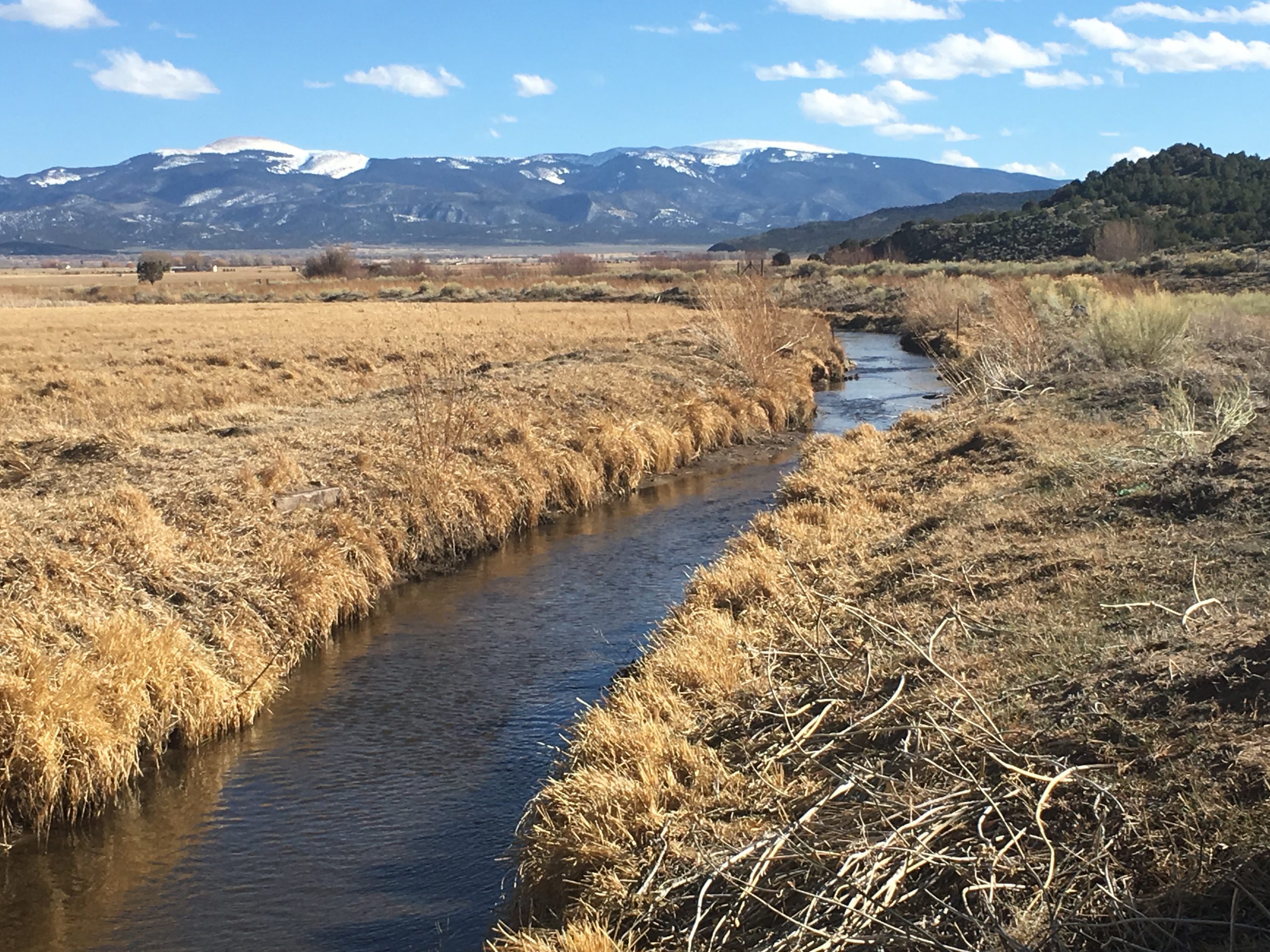Edited by Peter Nichols
In honor of Hispanic Heritage Month, we invite you to learn about Acequias, community-based irrigation ditch systems that are a cultural foundation and way of life in southern Colorado’s San Luis Valley.
An acequia is a communal irrigation ditch system where all members or parciantes of a community are entitled to a fair share of the water. In exchange for using the water, the community members contribute to the maintenance and repairs of the ditch system. Every parciante does their part, benefitting the entire community.
Acequias originated in the desert climate of North Africa and were brought to Spain by the Moors. The Spanish then brought the concept to the Americas. The word Acequia, pronounced “ah-se-kyah”, comes from an Arabic word meaning “water bearer.”
Colorado’s acequias are primarily located in the San Luis Valley where many families trace their ancestry to Spanish settlers. Farmers and ranchers living in New Mexico moved north to Colorado in the 1840s and brought with them this community-based system for irrigation and water sharing.
Colorado’s oldest water right is the 1852 San Luis People’s Ditch, an acequia that diverts water from Culebra Creek in Costilla County. The ditch was hand dug by Spanish-American settlers around 1851. The land along the ditch was divided into narrow vara strips so that each settler would have water for domestic use and to irrigate a garden and pasture. Today, the ditch is 4 miles long and provides water for about 2 dozen farms.
Colorado adopted the Doctrine of Prior Appropriation as the only recognized system for using water in the state upon statehood in 1876. Prior appropriation is based on the principle of “first in time, first in right” – a very different approach to using water than that of the acequias. For example, in times of water scarcity, older water rights under prior appropriation will still get their water but newer water rights may need to go without. In contrast, acequia communities may cooperate to ensure equitable distribution of available water to all users. And if there isn’t enough water to go around, they may share irrigated lands.
Acequia communities continued to operate in their traditional way for a century and a half, but faced the threat of losing their water to promoters and speculators after 2000. The Colorado legislature adopted the Acequia Recognition Law in 2009 to authorize acequias to operate in accord with their community heritage. The law also strengthened the acequias’ ability to protect their water from speculative transfers outside an acequia system.
After the passage of the Acequia Recognition Law, Colorado Water Trust’s first Executive Director, Peter Nichols, who had since joined Berg Hill Greenleaf & Ruscitti as a water lawyer, helped found the Acequia Assistance Project at CU Law. They published the Colorado Acequia Handbook, a guide to assist acequia communities in navigating Colorado water laws to ensure protection of their water rights, and help acequias obtain decrees for their historical water rights.
Today, acequias continue to operate in Costilla, Conejos, and Las Animas counties just as they have for nearly 175 years. Acequias not only provide water for hundreds of family farms, but they are also a hub of support for the community and a cultural way of life.
Learn more about Colorado’s Acequias and the Acequia Project:
Acequia Project Completes Multi-Year Case Assisting Southern Colorado Farmers
